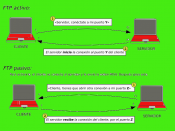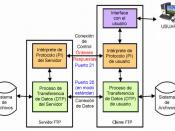Module 2
Section 3
3.2 Building the Network
IMPs:
(Interface Message Processors) group of identical minicomputers forming a sub network in the ARPANET to handle the passing of messages between different host computers. Based on an idea by Wesley Clark.
The IMPs' role would be to
Send and receive data
Check for errors
Route messages
Verify that these messages had reached their final destination
Who built the first network?
A firm called BBN (Bolt, Beranek and Newman) which had close links with MIT.
Their contract was to build four IMPs. The first two IMPs were built - one at UCLA and the other at Stanford Research Institute - and the first network experiment took place.
Two core aspects of the network design
Error correction
Adaptive routing
________________________________________
3.3 Protocols - what they do and why they matter
Protocol:
A set of rules that form a standard method of doing something.
In networking, a set of rules that determine how two or more computers interact and communicate. Internet protocols include TCP/IP, FTP, HTTP, and TELNET.
HTTP Protocol: (Hypertext Transfer Protocol)
A client-server protocol used for the exchange of web pages on the World Wide Web. Describes how to conduct the four stages of a web transaction: connection, request, response and close.
TCP/IP: (Transmission Control Protocol/Internet Protocol)
The core protocols controlling communication on the Internet, including many protocols in addition to TCP and IP.
How do the Internet protocols pass messages?
They specify the format that a message must take
The specify the way in which computers must exchange a message within the context of a particular activity such as
o Exchanging e-mail,
o Establishing remote connections
o Transferring files
Some of the protocols used today on the Internet
Simple Mail Transfer Protocol (SMTP) - to send and...


